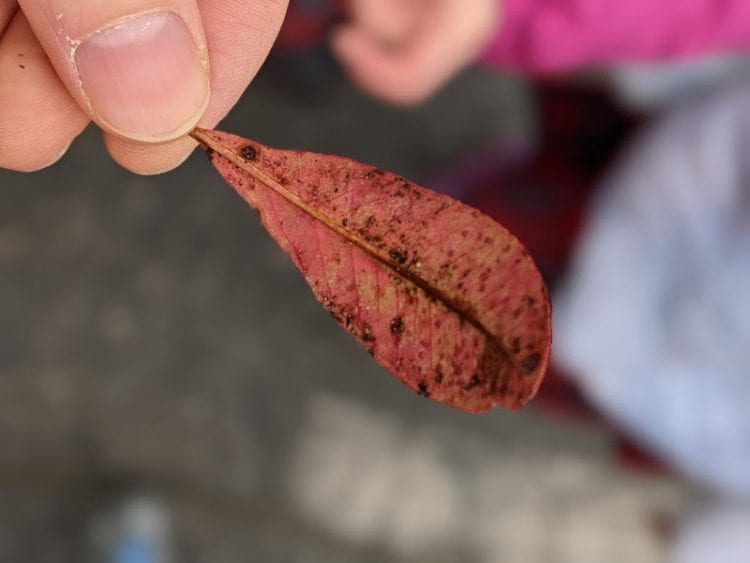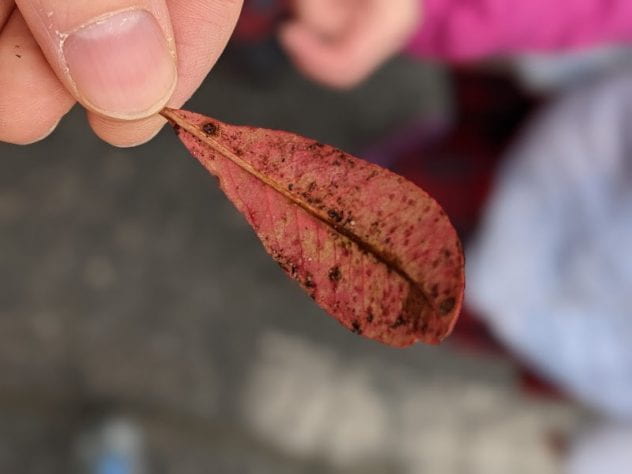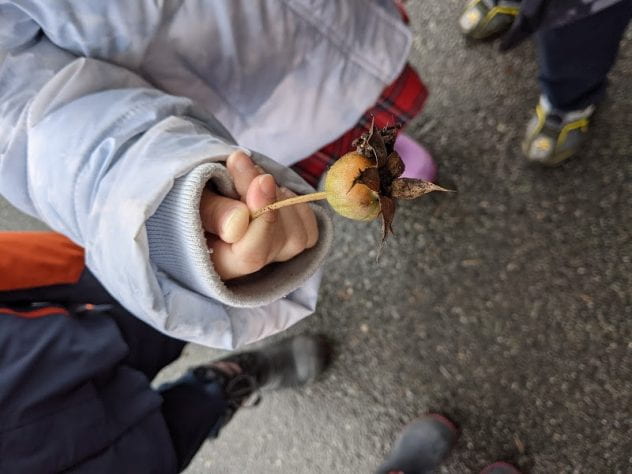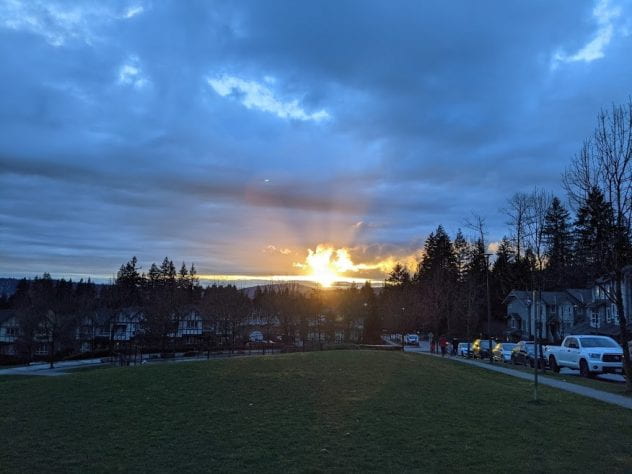 By Jordan Mayer (MEd in Imaginative Education, Primary Educator)
By Jordan Mayer (MEd in Imaginative Education, Primary Educator)
As an educator, I am fascinated by wonder and how it can impact learners of all ages. I recently embarked on a “wonder” journey with my students that involved several lessons outside. During my first Imaginative Education (IE) lesson with students, I was pleasantly surprised by what took place. For the first ten minutes of the lesson, I gave students free time. Some played tag or a game called Statue while others simply walked around and chatted with their friends. When I called students back to me, I asked them what they had noticed. Most hadn’t noticed too much. Those that did answer quickly looked around and pointed out something obvious: a big tree, the hedge or a pinecone lying next to them. After this discussion, I told students that they would be going on a walk around the school and provided them with the following instructions:
“Look for things that you find lovely or beautiful. I’d also like you to look for things that you find gross or un-lovely.” (Judson, 2018, The Walking Curriculum, p. 21)
I then sent students out together in groups of two or three. It was really neat to see what students found when they were given time and parameters for what to look for. In regards to lovely, some students found very colourful leaves as well as branches from a nearby Douglas fir tree. Others found different coloured rocks and flowers just starting to poke out from the earth. In regards to un-lovely, students pointed out mud, a worm found in a puddle and a very strange substance that looked like dung in a tree.
I was quite interested in the growth that was on many of the branches in this particular tree. As a result, I took a picture of it and then continued looking for lovely/unlovely objects. When I got home later that day, I used the Google Lens feature on my phone to see if I could solve the mystery of what was growing in that tree. It turned out that the unknown substance was a fungus known as Black Knot. If untreated, a tree will die from this fungus. The next day I told my principal about the tree and he said he would make sure the problem was taken care of.
As I reflected on the walk with my students, I was so thankful that a child noticed the fungus and pointed it out. The funny thing is, all of the students, parents and teachers who attend our school walk by that tree every day. Either no one noticed it or maybe they believed it wasn’t important enough to share with anyone else.
Wonder is a wonderful thing, however, I believe that we shouldn’t stop with wonder. If that child had thought: “I wonder … what is that growth on the tree?” and then walked away, it’s quite possible that the tree would have died. As an educator, I’m curious about the different components of wonder and its impact on learning. In my action research project titled, A Little Patience: Regaining Wonder and Gratitude Through Attentiveness I unpack ten different themes that can encourage wonder in people of all ages. These include:
Slow Looking
Slow looking can be defined as, “taking the time to carefully observe more than meets the eye at first glance” (Tishman, 2018, p. 2). As I’ve started to explore the world, I’m often surprised by how much I miss. It has been said that we can miss 99% of what is going on around us. Over time, I’ve come to realize that there is a lot of truth to this statement. I’ve also learned why slowing down is so important when it comes to education. Take a look at the following photo for example:
Look at the leaf. Take a second glance. What do you notice? For me, I see the veins in the leaf. I notice that the center part of the leaf is light on the bottom and darker near the top. I wonder why? There is a story to this little leaf. Something has happened here. As educators, we can help children look at clues and enable them to find answers. Without slowing down, however, we would probably walk over this leaf and miss an engaging activity that we could have enjoyed together.
Humility
Throughout this project, I’ve come to learn just how important humility is when it comes to wonder. In life, it seems that we have been trained to find answers as quickly and efficiently as possible. Have a question? Just type it into Google and you’ll find your answer. The problem with this method, however, is that a quick search online rarely gives you the full picture. What a tragedy to infer to students that objects can be fully known in a matter of minutes. When reflecting on this issue, Piersol (2013) writes:
“We have been trained to seek out quick explanations to our wonders and then, upon hearing an answer, assume that we have nothing left to learn. Not surprisingly, learning has become boring for many students because we present the world as almost fully known; we have removed the mystery and turned the puzzles into simple ones that can be solved in a few neat steps.” (p. 28)
We need to re-introduce the weird, the wacky and the wonder-full parts of our world to students. To show them that the world is full of surprises and mysteries. Sometimes we will find answers and other times we won’t.
Appreciating the Fragility of Life
Death is the mother of beauty. Only the perishable can be beautiful, which is why we are unmoved by artificial flowers. ~ Wallace Stevens
When I first heard the quote from Wallace Stevens, I was utterly amazed! I had never considered how the perishable could be beautiful. As I’ve taken time to reflect on this statement, however, I’ve realized there is a lot of truth to it. The things that fade typically mean something to us. Take a sunset for example: it doesn’t last forever. Instead, it can only be viewed for a short amount of time and then it is gone. There is something beautiful to that. In a way, the fragility of the moment calls to us. If we listen, we will sit down and enjoy the moment. It doesn’t last long, but that’s not what matters. I think what truly matters is being still and grateful for the experience regardless of how long it lasts.
Resources
Egan, K., Cant, A., & Gudson, J. (2013). Wonder-Full Education: The Centrality of Wonder in
Teaching and Learning Across the Curriculum. Routledge.
Judson, G. (2018). A Walking Curriculum: Evoking Wonder and Developing a Sense of Place
(K-12). KDP.
Tishman, S. (2018). Slow Looking: The Art and Practice of Learning Through Observation. Routledge.
Listen to Jordan’s podcast where he interviews guests on a variety of topics. These include the importance of play, developing a growth mindset and taking a deeper look at imagination.
Read more of Jordan’s work featured on imaginED: Your Smile Makes Flowers Bloom





Wonderful read! “Death is the mother of beauty” made me think of this:
as the fall approaches and the leaves are turning, we notice how beautiful the death of photosynthesis is.
Thank you for going the distance to create these long wondering discoveries with our youth.
Great post, Jordan!! I love the way you make time for wonder with your students and the way you take the time to “while” with them. They are lucky indeed.